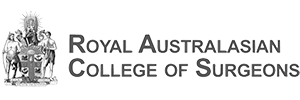Leiomyosarcoma
What is Leiomyosarcoma?
Leiomyosarcoma is a common form of soft tissue sarcoma. Leiomyosarcoma arise from smooth muscle. Smooth muscle is found within hollow organs of the body, including the bladder, bowel and blood vessels. In females, there is smooth muscle seen within the uterus.
Who Does Leiomyosarcoma Affect?
Leiomyosarcoma most often develops in adults between the age of 40 and 70 years.
How Does Leiomyosarcoma Occur?
Leiomyosarcoma development is still poorly understood. It results due to DNA mutations in smooth muscle cells leading to uncontrolled growth and formation of mutated cells, resulting in tumour formation.
Causes Of Leiomyosarcoma?
Leiomyosarcoma causes are not completely understood. Some genetic conditions are associated with leiomyosarcoma development and these include:
- Hereditary retinoblastoma
- Neurofibromatosis
- Li-Fraumeni Syndrome
- Gardener’s Syndrome
- Werner Syndrome
Symptoms Of Leiomyosarcoma?
The symptoms for Leiomyosarcoma include:
- Formation of a lump or mass, which might be painful in nature.
- Symptoms depend on where in your body the mass develops and includes abdominal pain, weight loss and general malaise.
How is Leiomyosarcoma Diagnosed?
Doctors use a variety of tests to confirm a leiomyosarcoma diagnosis. These tests include the following:
- Physical Exam: During a physical exam, a doctor looks at and assesses the tumour.
- Imaging Tests: Tests such as CT and MRI scans help doctors locate the tumour and determine if it is cancerous or benign.
- Biopsy: A doctor uses a needle to take a sample of tissue from the tumour. Reviewing the cell sample under a microscope can identify features of leiomyosarcoma.
Surgical Treatment for Leiomyosarcoma
The most common treatment for leiomyosarcoma is surgical removal of the tumour. This can be a challenging process, especially if the tumour involves a major vessel, as this requires reconstruction of the vessel after the tumour has been removed.
The aim of surgery is to remove the tumour with a margin of normal surrounding tissue if possible. This improves the chance of cure and reduces the risk of the tumour re-occurring.
Sometimes, radiation therapy or chemotherapy is given before surgery to help shrink the tumour.
Non-Surgical Treatments for Leiomyosarcoma
Radiation Therapy
The use of radiotherapy for these tumours is common. Radiotherapy (either before or after surgery) is useful in the management of leiomyosarcomas. It has been shown to reduce the chance of the tumour re-occurring locally after surgical resection.
Chemotherapy
Chemotherapy is reserved for select cases, as studies have shown little benefit from chemotherapy following surgical resection of leiomyosarcoma.



